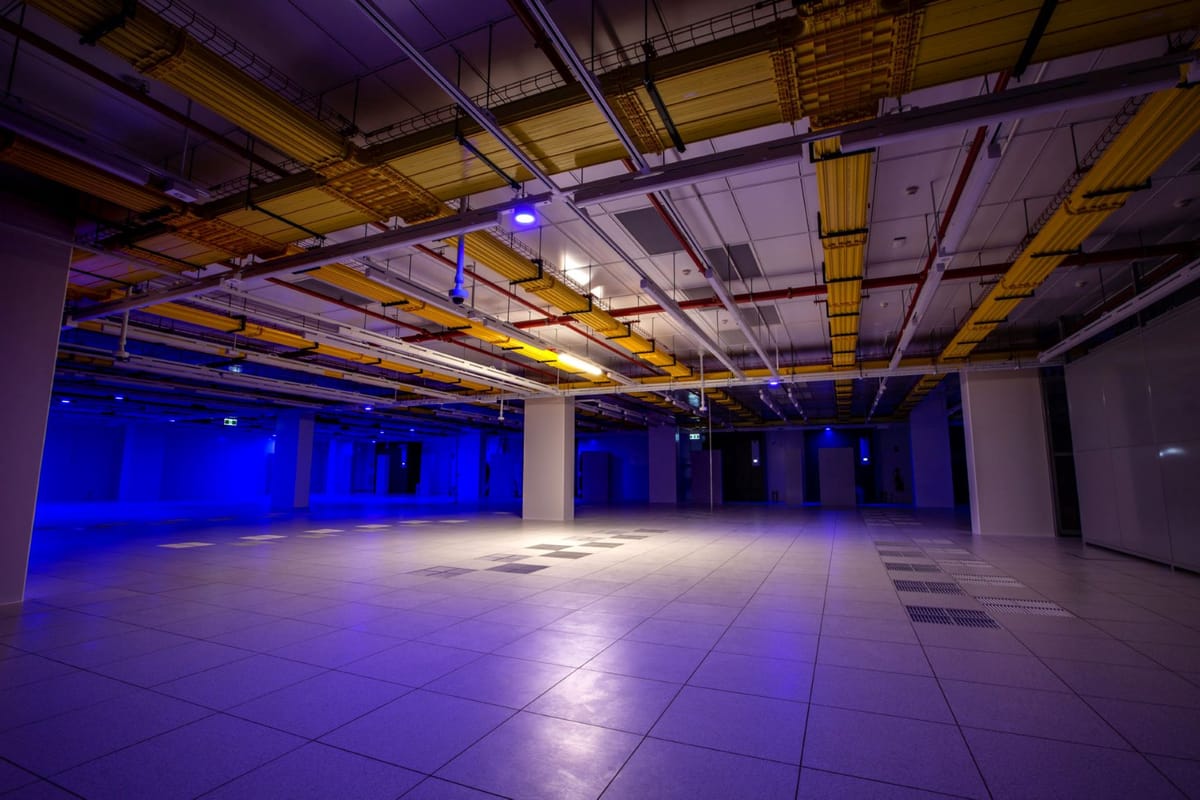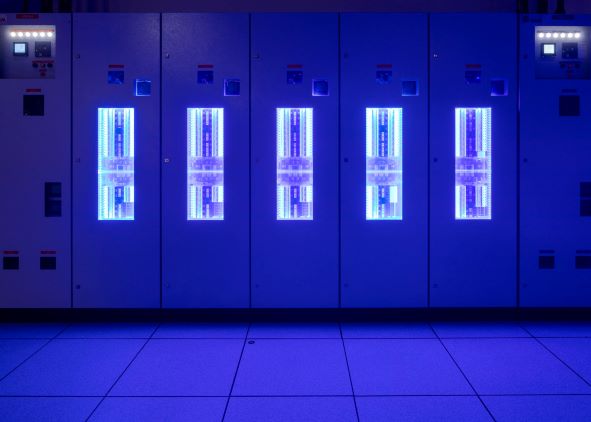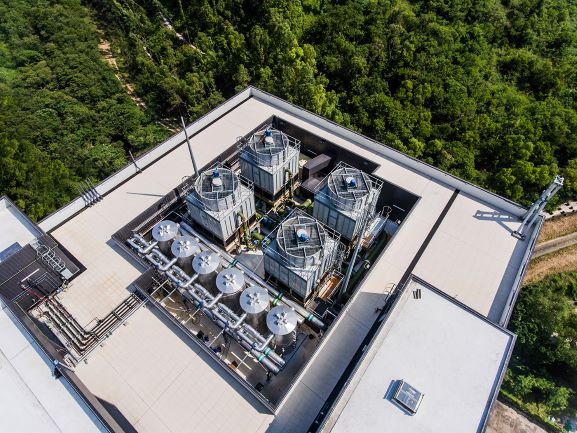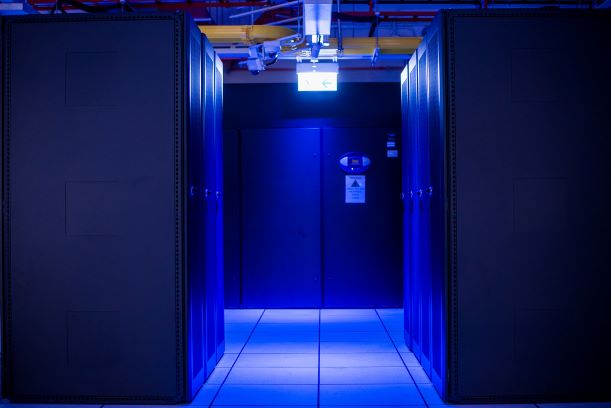
How did you get here? I’m not talking existentially, but here, to this page. If you searched data centre sustainability and clicked on the link, your request pinged across the Internet, probably passing through three or four data centre switches, consuming about 0.0003kWh of electricity and emitting 0.2 grams of carbon.
Hardly the end of the world. And even if you multiply this figure by billions of Internet users, each making dozens or hundreds of searches a day, you can be reassured that data centres only use between one and two per cent of global electricity generation, a figure that has remained pretty much unchanged for years.
Data centre operators might sleep easily knowing they are responsible for a relatively small proportion of energy usage and contribute comparatively little to greenhouse gas (GHG) emissions. But even if current estimates are accurate - a big “if”, as we’ll see - by the end of this decade the true figures will be far, far higher. So, what is the data centre industry doing to boost its sustainability credentials - and can it provide reliable metrics for its electricity consumption and its wider impact on the planet?
Appetite for consumption
How much electricity do data centres actually consume? Sustainability expert Roel Castelein, a former Director of The Green Grid, believes the long-established one to two per cent figure is outdated. “A generally accepted percentage for ICT is between three and six per cent, with half of that consumed by data centres themselves, and the rest accounted for by network infrastructure and devices. The pandemic might well have pushed that up, since we saw traffic volumes soar in 2020. In November, for example, the Amsterdam Internet Exchange broke the nine terabyte/s barrier. That’s the equivalent of 469 hours of HD video streaming every second.”
Others think the true figure could be higher still.
Back in 2015, Anders Andrae and Thomas Edler predicted that data centres could consume as much as eight per cent of global electricity by 2030. Some have found their figures for expected and worst case scenarios controversial, with Eric Masanet from Northwestern University claiming that “alarmist predictions of growing ICT energy use...have proven bunk”.

Nevertheless, Andrae has recently revised his estimates: he now thinks global Internet electricity consumption ranges between four and nine per cent, with data centres contributing between one and three per cent. By 2030, he expects the figure to be around 9 per cent, of which data centres will account for three per cent.
“I anticipate that global IP data volumes will grow around 14 times in the next ten years, and even with efficiency measures in place, data centre electricity use will grow between two and three times,” Andrae told The Stack.
But even that could be an underestimate.
“Data centres’ energy consumption has always been woefully underestimated,” says John Booth, consultant at Carbon3IT. Back in 2013 John was part of a team advising techUK and the-then Department of Energy and Climate Change on meeting targets under the Climate Change Agreement, where commercial colocation centres embarked on energy efficiency in return for reductions in the Climate Change Levy.
“In the second reporting period ending in 2017, total UK data centre electricity consumption was measured at 2.579 TWh, or 0.79 per cent of total UK generation,” he explains. “But that’s just commercial colocation. That figure completely ignores private and semi-public operators. So BT’s 10 facilities aren’t counted; nor are the eight that Sky uses for its content delivery network.”
However we measure it, no one doubts that data centres’ energy usage is set to spike significantly over the next ten years. Last November the EU Commission released its study Energy-efficient Cloud Computing Technologies and Policies for an Eco-friendly Cloud Market, which found that EU data centres consumed 76.8 TWh in 2018. This is expected to rise to over 98 TWh by 2030, a 28% increase.
“This increase in absolute terms can as well [sic] be seen in relative terms: within the EU, data centres accounted for 2.7% of electricity demand in 2018 and will reach 3.21% by 2030 if development continues on the current trajectory”, claimed the authors.

“In the worst case scenario it is assumed that current growth will accelerate even further…[and that] an increase in data centre energy consumption up to 160 TWh/a in 2030 is possible.”
It’s easy to get lost in these spiralling numbers, so a little perspective is needed. We’re talking about a single, regional industry consuming as much energy as entire countries. In fact, in Booth’s worst-case scenario of 160 TWh per annum, the EU data centre sector would rank 24th in today’s list of countries by electricity consumption. (It is worth noting that Bitcoin mining alone accounts for 112 TWh/year, putting it between Argentina and Norway.)
Booth says we need to look beyond the hyperscalers when it comes to thinking about data centres’ electricity consumption. “There are around 40,000 businesses in the UK with over 250 employees. Most of these will have their own server room, each with around 50 items of network equipment. But not only are these not being counted, they have a disproportionate impact on overall energy consumption. Remember, these aren’t specialist facilities: we’re talking about small rooms that were likely never meant to house IT equipment: they are over-cooled, badly-designed and, ultimately, extremely inefficient.”
Booth considers official estimates of IT’s electricity usage to be wildly optimistic, and that a more accurate figure for the UK is 41 TW/h, or around 12% of our electricity generation. And that’s just pure commercial: add in domestic usage from smart speakers, home computers and other connected devices and IT consumes even more. “So, you can see the difficulty is getting the information when it’s spread across so many entities.”
Clearly, one of the problems of estimating global data centre electricity consumption is the very definition of “data centre”. But even if we only count those giant, windowless, barbed wire-surrounded boxes, the widely-touted figure of 1-2 per cent seems way off the mark.
For example, in its 2020 article Recalibrating global data center energy-use estimates, Science Magazine noted that there were 450 hyperscale data centres across the world with another 150 in construction, and admitted that these use between 3-13 per cent of global electricity, with the true figure being about 7-8 per cent.
If the first step towards addressing a problem is to understand its true scale, it appears we are a long way from even beginning to tackle the challenge. So, how is the industry measuring its impact on the planet?
In search of meaningful metrics
No discussion of data centre sustainability would be complete without mentioning The Green Grid, the non-profit industry association that works to improve IT and data center energy efficiency and eco-design around the world.

The Green Grid created and promotes many of the metrics that have become standard within the data centre sector, including Power Usage Effectiveness (PUE) - the ratio between the total amount of power consumed by a facility, and the amount that goes directly on computing equipment.
Kevin Brown is Senior Vice President, EcoStruxure Solutions and CMO, Secure Power Division at Schneider Electric, one of the founding members and most active contributors to The Green Grid.
“If you ask most data centre operators today, the vast majority can give you a number for PUE,” says Brown. “Ask them how many server rooms, and some may know. But when it comes to overall electricity usage, they’re in the dark.”
One of the problems with accurate measurement is that PUE has spurred the industry to reach the limits of what’s possible with physical technology.
“PUE has been fantastic,” says Brown. “It’s not perfect, but it has driven so much activity and changed the dynamic within the industry. In the last decade, we’ve reduced waste by around 80 per cent, and PUE has played a fundamental role in driving these efficiencies. When you look at what hyperscalers have done, it’s incredible what they’ve achieved in such a short space of time. But we’re now reaching the limit of what’s possible.”
Booth agrees, pointing out that PUE is just one of nine ISO metrics which include the energy reuse factor, renewable energy, water and carbon usage effectiveness. “There’s nothing wrong with PUE as a metric,” says Booth. “The problem is that it becomes a fig leaf that enables operators to ignore the others. It should be child’s play to report overall energy usage, for example, but how many facilities do this? How much energy does Facebook, Netflix, YouTube or crypto mining use? All we’ve got is guesses. And if we don’t know how much energy they use, it’s impossible to establish whether the utility justifies the energy it consumes.”
One solution to the vexed question of metrics is to look beyond PUE - which measures how much energy is used on cooling and other ancillary energy loads - and start searching for one that gives a truer indication of the overall efficiency of a facility. Anders Andrae thinks that MegaFLOP/s/W is a far much better way of thinking about data centre energy efficiency than PUE.
This isn’t a particularly new idea: Barry Pangrle proposed the idea back in 2016 in a paper for CHIPS, in which he suggested that a one ExaFLOP/s facility in 2022 should consume around 40MW. But extrapolation of achieved results in Mega- and TeraFLOP/s applications suggested that an ExaFLOP/s datacentre in 2016 would use between 769 and 1090 MW, or 19 to 27 times more than the power targeted six years ago.

“It would be great to confirm how many MFLOP/s/W a one ExaFLOP/s data center would operate at right now with the latest semiconductor and energy saving technologies,” says Andrae.
Robert Bunger, Program Director, CTO Office at Schneider Electric, confirms that The Green Grid is currently investigating how to count energy usage per Tera- or ExaFLOP. “It’s an interesting idea, certainly, but we shouldn’t see it as the Holy Grail of efficiency metrics,” he argues. “There is more to data centres than compute; we’ll also need to look at efficiency in the software layer. We don’t have the answer yet, but we’re working towards it.”
What about users?
Just a few years ago, conversations about MegaFLOP/s/W would have looked, to outsiders, as abstruse as the old theological discussions about how many angels can dance on the head of a pin. Recently, however, awareness of data centre sustainability has skyrocketed among the end users who actually use these facilities.
Brown and Bunger point to a report compiled by Schneider Electric and 451 Research published towards the end of last year, based on interviews with more than 800 data centre service providers around the world to determine the current state of strategic sustainability initiatives.
The report, Multi-tenant data centres and sustainability: ambitions and reality, highlights how a majority of data centre operators (57 percent) view sustainability as a competitive differentiator and cite customer expectations as a major driver in the next three years - more than double the number who believe that is true today.
The biggest driver for sustainability was customer expectations, cited by 50 per cent of respondents, with almost everybody (97 per cent) saying that at least some of their customers are looking for contractual commitments to sustainable practices.
Given the demand for evidence of sustainability, it might seem surprising that less than half (43 per cent) of respondents say they have a sustainability strategy, including for implementing infrastructure efficiency initiatives, currently in place.
The lack of progress towards greater sustainability can be explained by the limitations of current metrics, as well as the fact that operators have already made most of the physical efficiency gains possible with current technology. But according to Brown, there’s another important, psychological factor we need to consider.
“There’s an old study about how organisations overestimate the costs of sustainability initiatives, and underestimate the benefits they bring,” he says. “We can see that the demand is there among end users, and that’s a massive opportunity for the sector. Ultimately, if your facility exhibits best practices and a commitment to efficiency, businesses will pay a premium to be in the building.”
Towards a sustainability roadmap
For around a decade now, The Green Grid has published and regularly updated its Data Centre Maturity Model (DCMM), a roadmap for operators to assess their level of efficiency across every aspect of operations - from power to cooling, compute to network - and work towards industry best practices.
But when it comes to plotting a path to greater sustainability, the DCMM is not the only game in town. Other standards include the EU Code of Conduct for Data Centres (Energy Efficiency) and, since its launch last month, the Climate Neutral Data Centre Pact.
As any technologist knows, a proliferation of competing standards is no guarantee of greater clarity, and can actually be detrimental to shared goals.
John Booth welcomes attempts to develop directives that will lead to greater sustainability, including the Climate Neutral Data Centre Pact, but believes that the industry’s priority should be to focus on better, more comprehensive implementation of existing standards.
“The EU Code of Conduct represents a comprehensive cultural, strategic change management tool,” says Booth. “It encompasses everything from power, cooling, IT design, power systems, monitoring and measurement. But for it to be effective, you’ve got to follow the document from start to finish: you can’t cherry pick which elements you follow and which you don’t.”
“To deliver truly sustainable facilities, we need software, facilities management, engineering - everyone - to work together. But far too often today, it’s happening in piecemeal fashion, and that’s entirely missing the point.”
Booth is adamant about the importance of getting senior management involved in sustainability initiatives. “They are the ones dictating how a facility is being used, so they need to step up and take ownership of the relationships between different departments so they’re working together to achieve unified goals.”
One area where the industry is making positive strides is its increasing use of renewable energy, including direct power purchase agreements which guarantee that 100 per cent of their electricity comes from renewables. The tech sector dominates the market for long-term renewable contracts: in 2018, for example, Facebook, Amazon and Google accounted for more than a third of US corporate renewable procurements.
Staying in the US, the Environmental Protection Agency’s Green Power Partnership publishes its National Top 100, a list of its best-performing members’ renewable energy usage. The technology sector features heavily - including data centre operators such as Equinix and Digital Realty. Google and Microsoft take the top two spots, each using 100% renewable energy for their US operations, consuming well over 13 billion kWh of green electricity between them.
While efforts to embrace 100% renewable energy should be applauded, Castelein is quick to point out that electricity is only one source of data centre emissions. “Renewable energy contracts are a very positive step forward, but it does not solve the problem of refrigerant gas emission from chillers, which are many times more potent than CO2.”
Kevin Brown also stressed the impact of greenhouse gas emissions, in particular sulphur hexafluoride (SF6) used in medium voltage (MV) switchgear.
“Removing SF6 is a crucial aspect for operators to consider, as it has an extremely high global warming potential and is 23,500 times more potent than CO2,” said Brown. “So even with a renewable energy strategy that includes power purchase agreements (PPAs) or carbon offsetting, there are still a number of other vectors that must be addressed to become truly sustainable.”
“I believe that today’s operators need to think outside of the confines of traditional deployments and consider resource efficient designs that have the ability to integrate with the grid,” he continued. “We also have to look at reducing Scope 3 emissions [indirect emissions, for example from the supply chain] and identify options to utilise circular materials. As operators look for strategies to become carbon neutral, it’s crucial they understand that sustainability is a complex subject and it needs a holistic approach.”
Data Centre sustainability: Government’s role
Initiatives like the Climate Neutral Data Centre Pact represent efforts towards industry self-regulation, but what role can, and indeed should, government play?
We asked the Department for Business, Energy and Industrial Strategy about the government’s green ICT strategy. “We are committed to understanding the environmental impacts and benefits of increased data use,” said a government spokesperson in a prepared statement. “Through our recently published Energy White Paper and pioneering projects such as our Climate Change Agreement scheme, the Industrial Energy Transformation Fund and the Greening Government ICT and Digital Services Strategy, we are taking practical steps to deliver world-leading green ICT, helping the UK build back greener and meet net zero emissions by 2050.”
BEIS pointed to the Climate Change Agreements (CCA) scheme, a voluntary agreement with targets to reduce energy use and carbon emissions, as well as the Industrial Energy Transformation Fund (IETF), announced in last year’s Energy White Paper, which will provide grant funding of up to £289m towards energy efficiency and decarbonisation measures. It also notes that the Department for Digital, Culture, Media & Sport will publish its response to the consultation regarding the National Data Strategy “in due course”.
We’ll have to wait to see what the UK government’s plans for greener ICT have in store, particularly for the data centre sector. But for a great example of how governments can support greater data centre sustainability, John Booth suggests we should look across the North Sea.
“The Dutch government has created six designated data centre campus zones, which could be pre-fitted with all the necessary infrastructure in situ, including access to renewable energy and pipework to carry waste heat to the surrounding district. What’s more, they can use planning guidance to make renewable energy mandatory, make employment schemes a condition of planning approval, and implement licencing of both site and personnel so that the whole facility is geared towards greater sustainability.”
Such initiatives aren’t a nice-to-have, argues Booth, but are central to the philosophy of what data centres are for in the first place. “Data centres are fundamental to almost every aspect of the modern world, so why aren’t they integrated into the heart of the local community? Why aren’t we seeing more facilities drawing power from local renewable generators, or channelling waste heat to residences and offices and so help them lower their own carbon footprint?”
Forget the footprint?
For all the discussion about energy efficiency, metrics and road maps, are we even asking the right question to begin with? Andrae thinks that bald figures of terawatt-hours barely begins to shed light on data centres’ true impact on the planet.
Rather than thinking about the negative “footprint” of carbon emissions and electricity consumption, he suggests we need to consider what he calls IT’s “handprint”: the role it plays as a platform for the technologies we rely on to build a greener, more sustainable and more productive planet.
“The electricity and greenhouse gas footprints of the Internet, including data centres, are not alarming considering the economic value and opportunities they create,” he says. “We live in unprecedented times of rapid digital innovation, with a huge range of connected devices feeding back into data centres, so digitalisation arguably has a higher handprint than footprint.”
Booth agrees, pointing to the recent GeSI report Smarter 2020: The Role of ICT in Driving a Sustainable Future which estimates that ICT solutions - for example, through smarter buildings, agriculture, logistics, manufacturing and more - has the potential to abate 9.1 gigatons of CO2, some six times the total emissions of ICT itself.
While these figures are estimates, what’s especially encouraging is that it shows ICT’s - and data centres’ - environmental impact can indeed be measured with something approaching accuracy.
“It’s not as if we don’t know how much compute, how much energy all these applications use,” says Andrae. “But nations today are still mainly concerned with measuring the ‘digital sector’s’ direct footprint. That’s not the best way of looking at it. We should not pretend that there’s an easy answer to understanding data centres’ true impact - it will take much better collaboration between the industry and its customers, which is currently still in its infancy. But it’s a challenge that we will solve in the coming decade.”
At the height of the Industrial Revolution, the English economist William Jevons postulated his famous paradox, which highlighted how greater resource efficiency leads to more of that resource being used. For all the vaulting ambition of achieving a carbon neutral data centre sector, it’s difficult to see how any advance - whether in liquid cooling, quantum computing, or greater collaboration between industry and customers - will bring us to net zero any time soon.
But as the GeSI report shows, measuring data centres’ positive contribution to the planet is not only within reach: it represents perhaps the most meaningful way of thinking about the sector’s sustainability.
As we’ve seen, data centre sustainability is a complex issue composed of many different threads, with competing approaches to everything from metrics to roadmaps to policy. The industry needs to pull these threads together into a single fabric, a common approach.
For most industries, this would be a daunting challenge. But data centre operators are perfectly placed to take their expertise in connecting the world, and translate it into better collaboration within the industry to establish best practices and shared goals.
No one doubts the industry’s appetite for maximising sustainability. The challenge of improving communication and unification is surely one the industry will approach with relish.